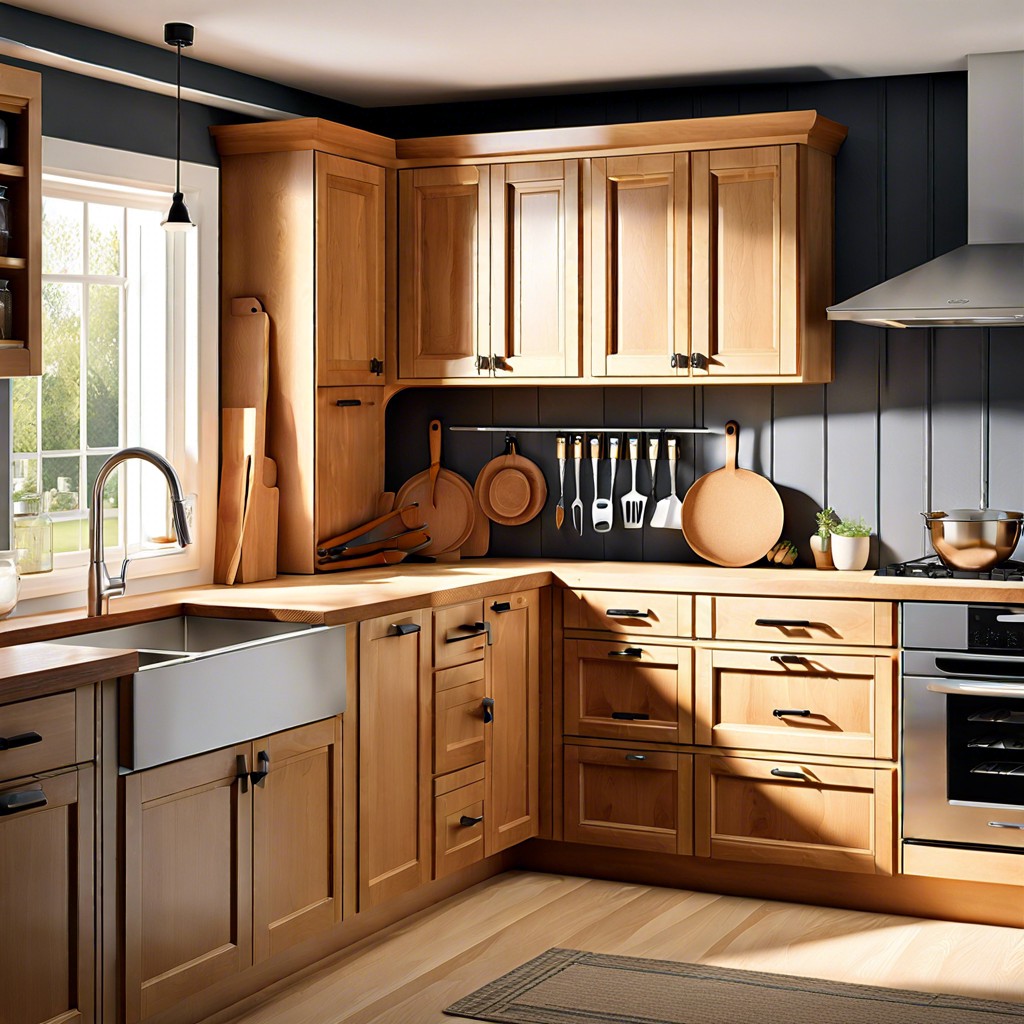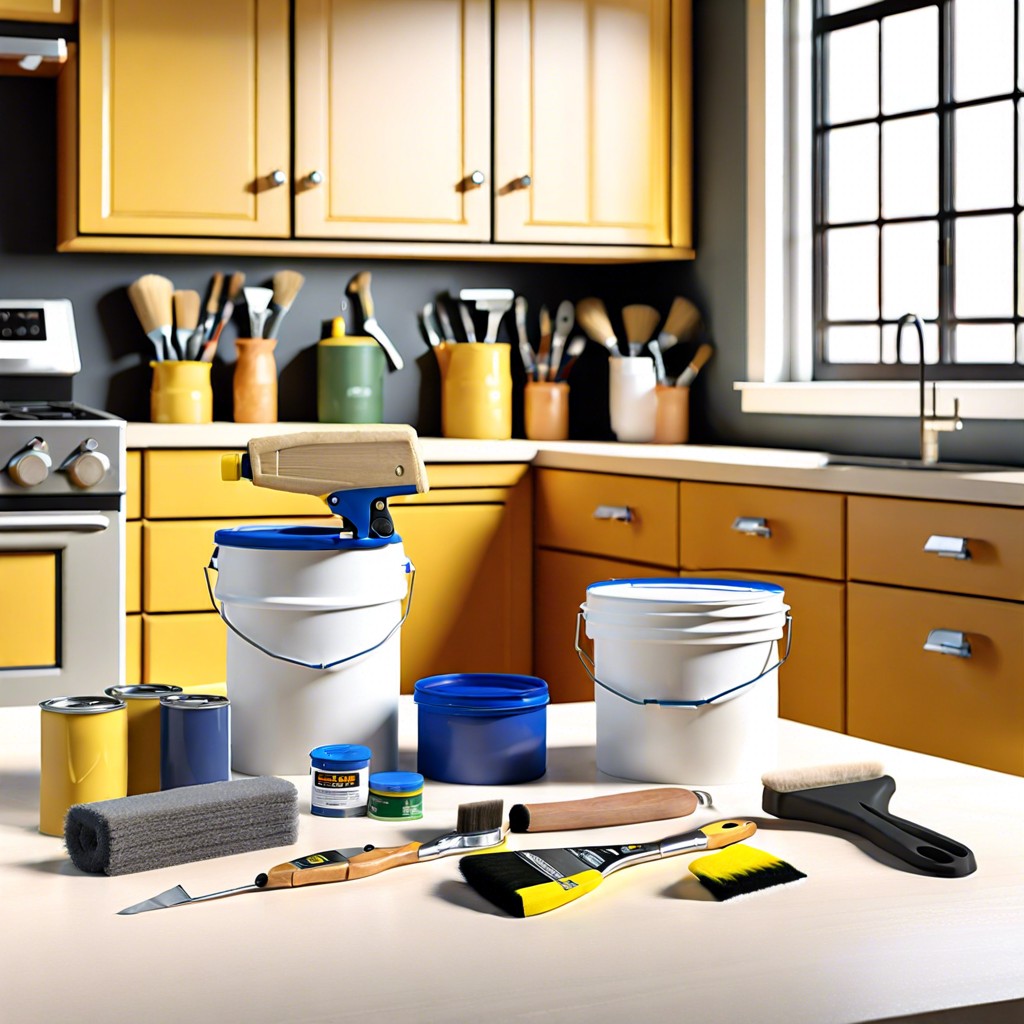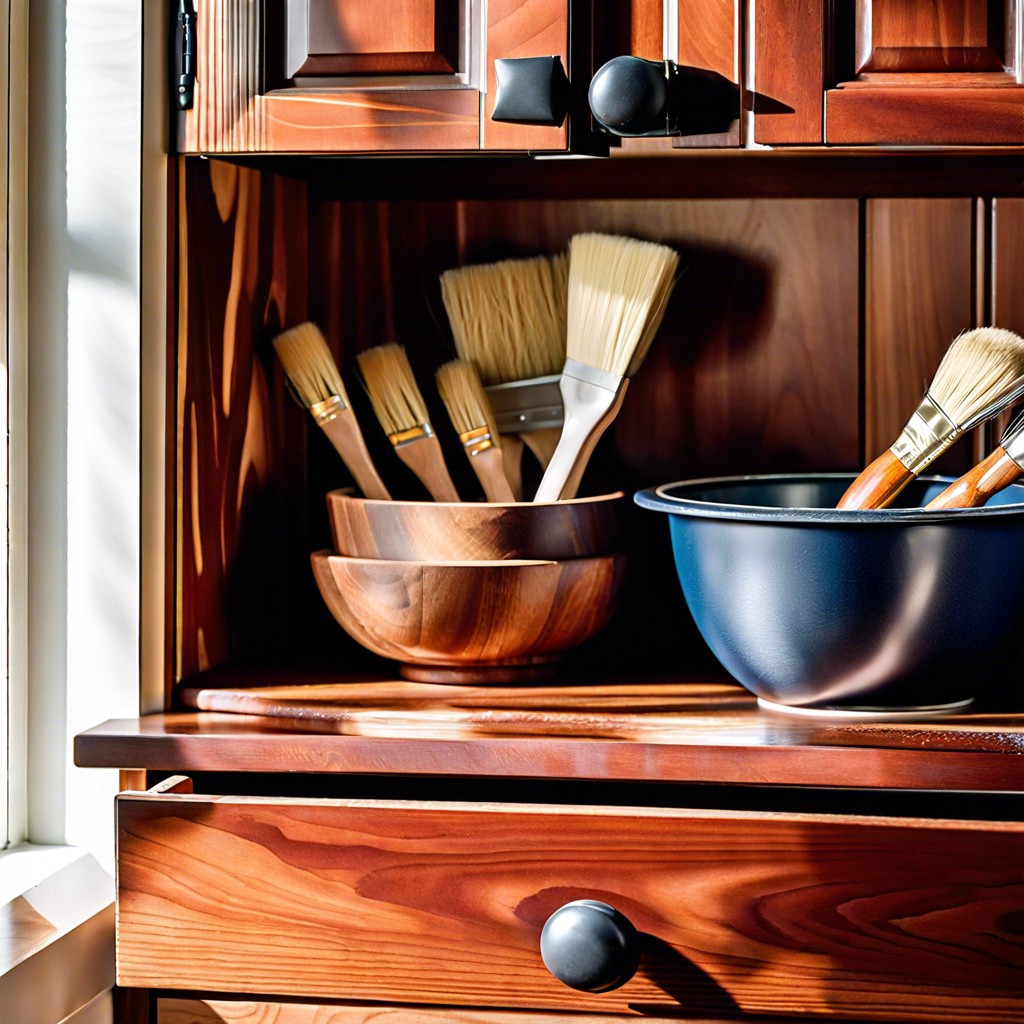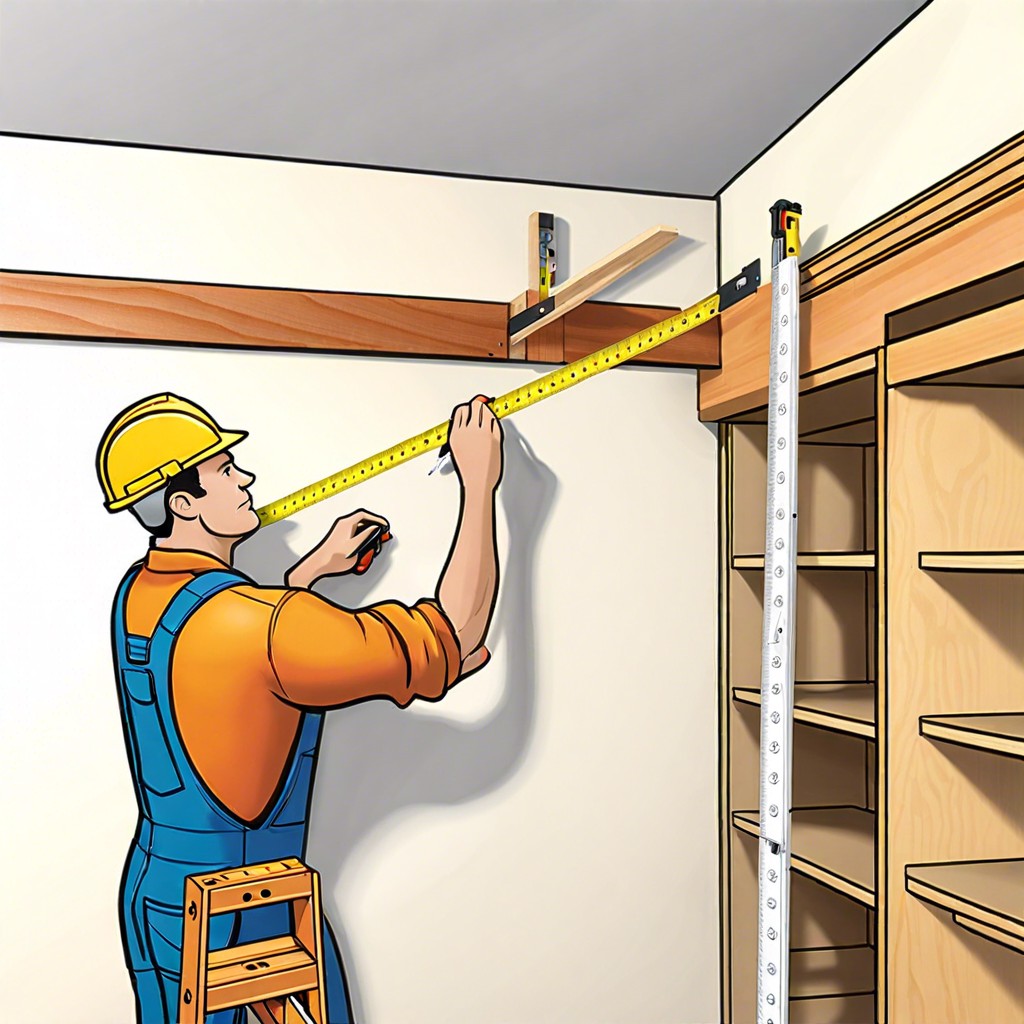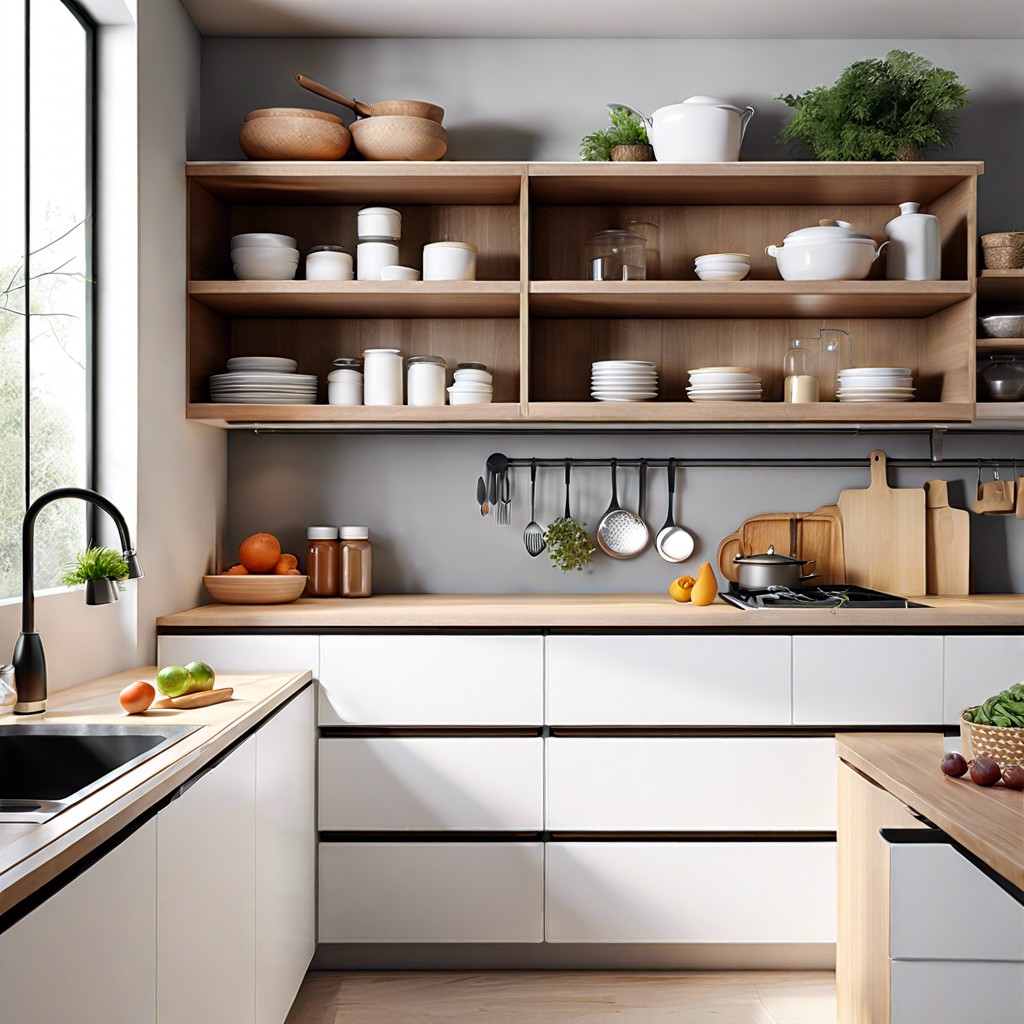Last updated on
Discover top-notch paints for kitchen cabinets that allow an effortless makeover without the need for sanding, each offering a smooth finish and admirable durability.
Key takeaways:
- Cleaning and degreasing cabinets is crucial for paint adhesion.
- Apply a high-adhesion primer as a bond coating before painting.
- Choose between a paint roller or spray gun for application.
- Use high-quality paint for durability and longevity.
- Consider environmental factors and proper maintenance for painted cabinets.
What's Inside
Preparation: Cleaning and Degreasing
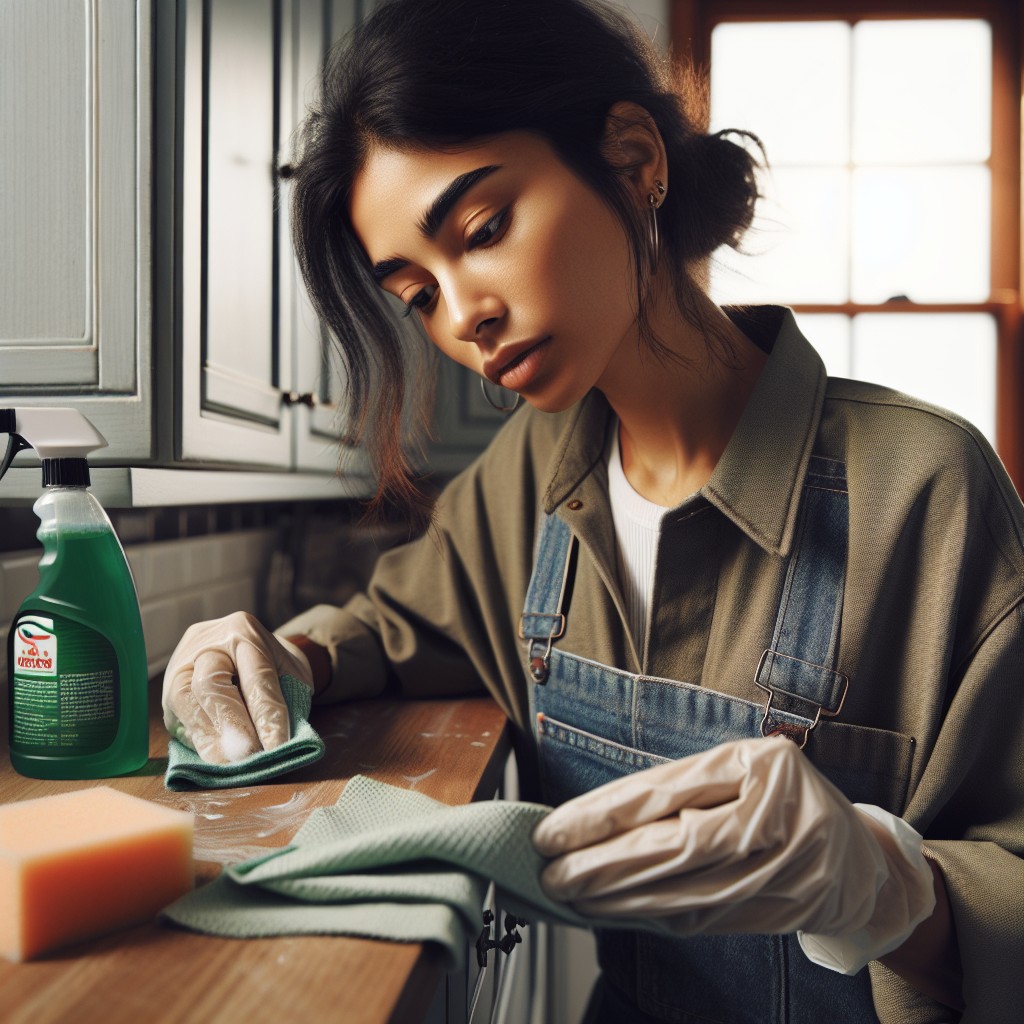
Before reaching for your brush, the success of your paint job is largely determined by the cleanliness of your cabinet surfaces. Greased-up kitchens are no friend to adhesion. Cut through the grime with a robust degreasing cleaner—trisodium phosphate (TSP) is a popular choice among DIY enthusiasts, but you can also find eco-friendlier alternatives. Use a soft cloth or sponge to wipe down every inch.
This isn’t just a cursory swipe; pay special attention to handles and corners where oils love to linger. Rinse thoroughly with water to remove any residual cleaner that could interfere with paint adhesion. For any stubborn gunk, gently scrape it off with a putty knife. Ensuring your surfaces are pristine paves the way for a paint job that’s smooth, even, and more likely to last.
Bond Coating Application
Before you dive into the heart of the painting process, it’s critical to apply a quality bond coating. This layer serves as the foundation for your paint to adhere well, without the strenuous task of sanding.
Consider a high-adhesion primer, designed specifically for slick surfaces. These primers chemically etch the surface, creating a strong bond for the topcoat to latch onto. With no sanding required, you simply apply the primer following the manufacturer’s instructions. Ensure a well-ventilated workspace and use a brush or roller suitable for a smooth finish.
Allow the bond coating to dry completely, as per the recommended time. It’s a waiting game that pays off in adherence and durability, forming a reliable base for the beautiful color you’ll soon be applying on top. Remember, the goal is to achieve a finish that not only looks professional but withstands the rigors of kitchen life.
Paint Application Techniques: Roll or Spray
When it comes time to actually apply the paint, you’ve got two primary methods at your disposal: the trusty paint roller or the more advanced spray gun. Each has its perks.
With a roller, you can expect a more hands-on approach. It’s less costly than a sprayer and requires less prep in terms of masking off the surrounding areas. However, it’s pivotal to select a roller with a smooth finish to avoid texture on your cabinets.
On the flip side, spraying can be a godsend for achieving that sleek, factory-finish look that’s all the rage. It uniformly covers surfaces, including intricate details and recessed areas, leading to a professional outcome. Yet, it’s not without its drawbacks. The overhead for equipment is higher, and it’s quite the commitment in terms of clean-up. Plus, proper ventilation is a must to disperse the inevitable paint mist.
Ultimately, consider the time and resources you have at hand as well as the desired outcome. Quick weekend refresh? A roller might be your companion. Going for that top-tier, envy-of-neighbors look? The spray gun awaits. Keep in mind: perfection lies in the prep and the patience, not just the paint.
Longevity and Durability of Painted Cabinets
Opting for a high-quality paint is crucial in ensuring your cabinets can withstand the test of time and the rigors of kitchen use. Acrylic alkyd enamel paint is often revered for its hard, durable finish, which stands up admirably against routine cleaning without the need for a protective top coat. Durability also hinges on proper application; multiple thin coats are preferable to a single thick coat, promoting a stronger bond and smoother finish.
When considering the wear and tear of kitchen cabinets, note that lighter colors may mask small blemishes better than darker hues. Additionally, some paint formulas are infused with additives to resist mold and mildew—a boon for cabinets under constant assault from steam and spills. Adherence to manufacturer drying times before reassembling doors and hardware cannot be overstated; patience pays dividends in the longevity of your cabinet’s finish.
Environmental factors, such as humidity and temperature swings, also play a role in the life span of your painted surface. Investing in a paint that’s specially formulated to contract and expand with your home’s unique conditions can avert premature cracking and flaking. Remember, the key to longevity is not just in the paint chosen, but in the careful preparation and maintenance after the application process.
